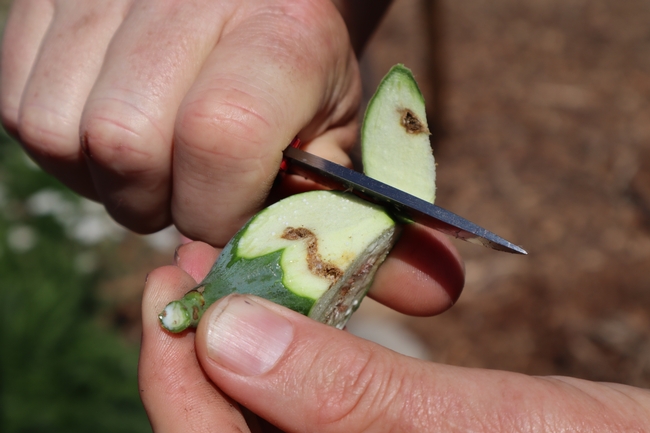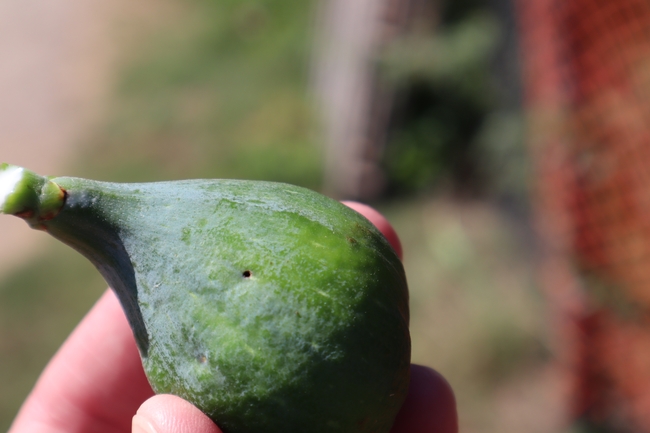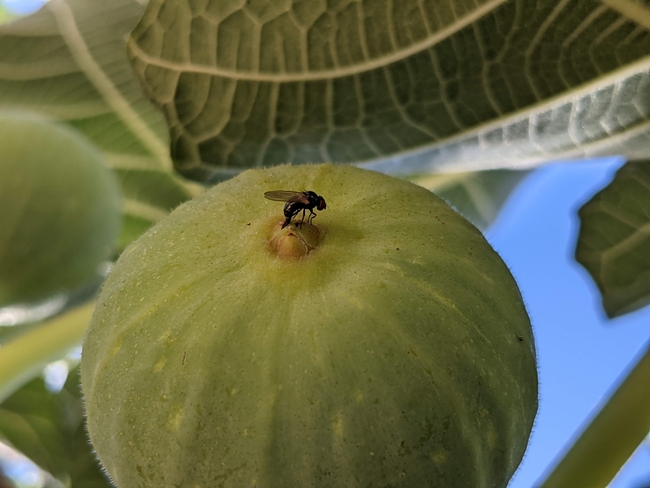Figure 2. Damage inside a fig caused by the larva of the black fig fly.
What can you do?
Figure 3. A small hole in the skin of a fig caused by the black fig fly.
If you find infested figs or suspect that black fig flies may be attacking figs in your yard, please contact your local University of California Cooperative Extension office. You can also report this pest to the California Department of Food and Agriculture's Pest Hotline: 1-800-491-1899 or www.cdfa.ca.gov/plant/reportapest/. Visit our website for more information about this pest.
[Original article published in the Fall 2021 issue of the Home & Garden Pest Newsletter]


